In this Issue
- Apple, Pear: codling moth updated dates, San Jose scale dates, woolly apple aphid update
- Peach, Apricot, Plum, Walnut: peach twig borer updated dates, earwigs, cat-facing injury, greater peachtree borer
- Berries: grape leafhopper, raspberry drupelet damage
APPLE, PEAR
Codling Moth
View a pdf of the spray timing table. (Note that some dates are in italics because they are past dates.)
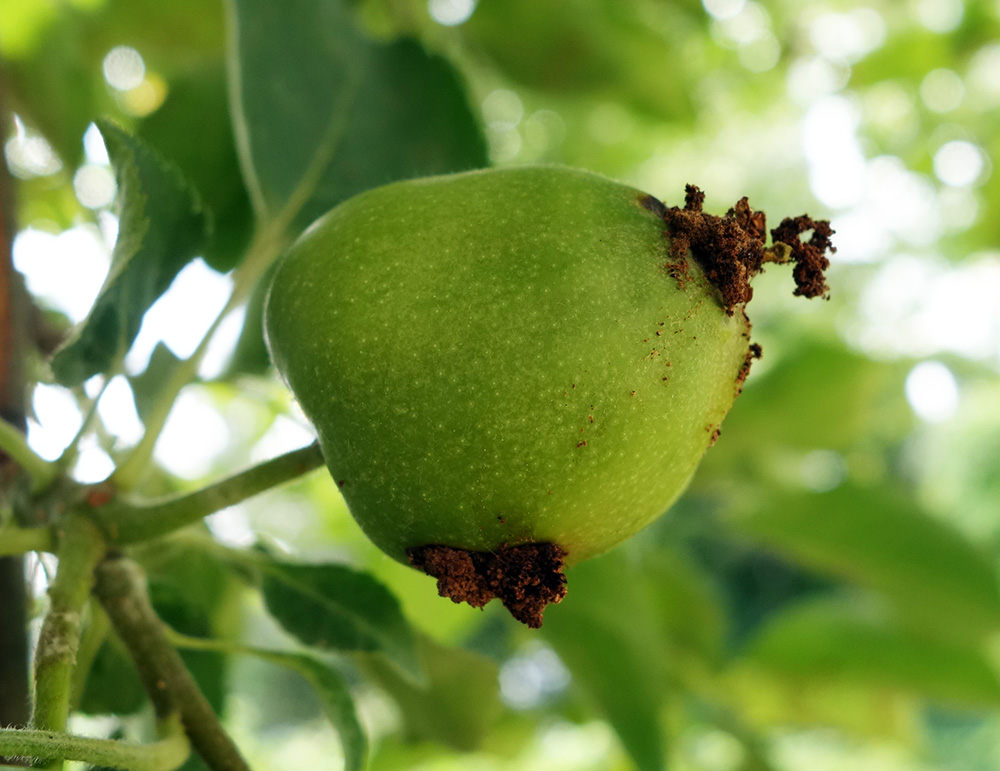
Second generation egg hatch has begun or will soon begin for most areas of northern Utah and is underway in southern Utah. As we noted with the first generation of codling moth, be mindful of the date range for the “period of greatest egg hatch” on the table. Make sure that the insecticide you are using for control has fresh (rather than waning) residue on the fruit during this time period.
Continue to protect fruit until harvest or September 15, whichever is earliest.
See the May 12, 2023 advisory for treatment options.
San Jose Scale
If present, treat for second-generation crawlers
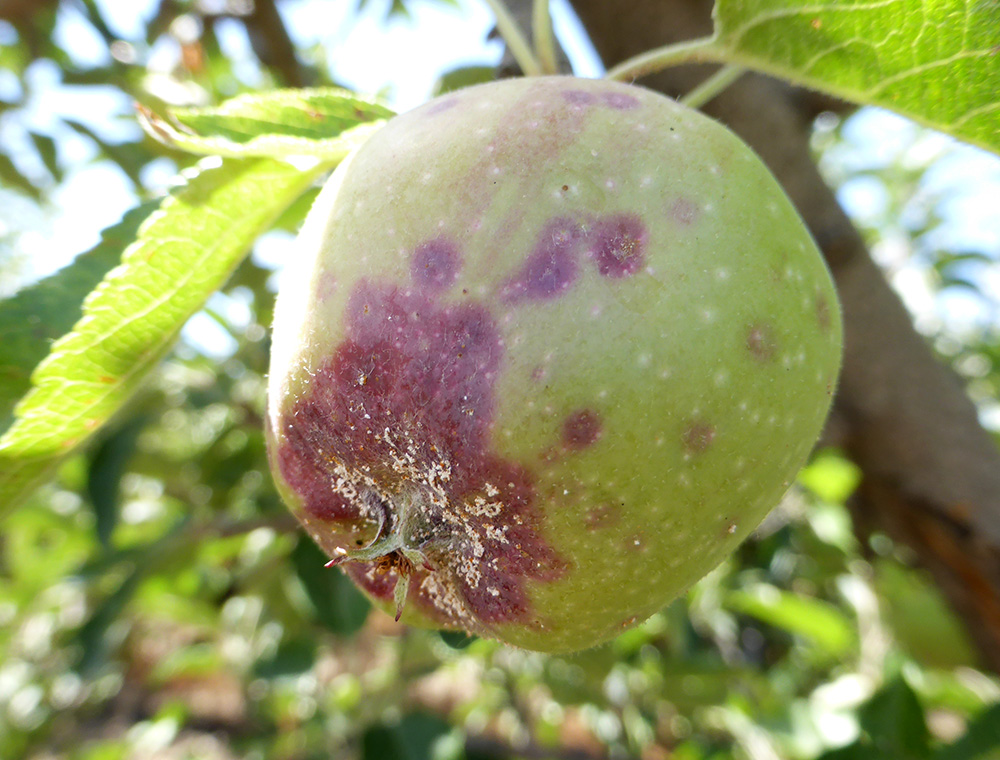
If you have been battling the insect, San Jose scale, note that there will be a second emergence of crawlers in late July to early August in northern Utah.
This pest is usually treated primarily with a dormant oil spray and with an insecticide application of the first crawler emergence. But for heavy infestations, or where you missed the window for the first emergence, consider a treatment at the timing below.
- Box Elder, Davis, and Utah counties: July 28 – August 2
- Salt Lake, Tooele, and Weber counties: July 21 – 25
- Cache County: August 11 – 16
- Iron County: August 9 – 13
Treatment
One spray is all that is necessary.
For residential application, use insecticidal soap or your normal codling moth spray, mixed with 1% horticultural oil (apply in evening or early morning to avoid hot temps).
For commercial application, mix 1% oil with Esteem, Sivanto Prime, or Centaur.
Woolly Apple Aphid
Monitor for cottony colonies especially on twigs or branch wounds
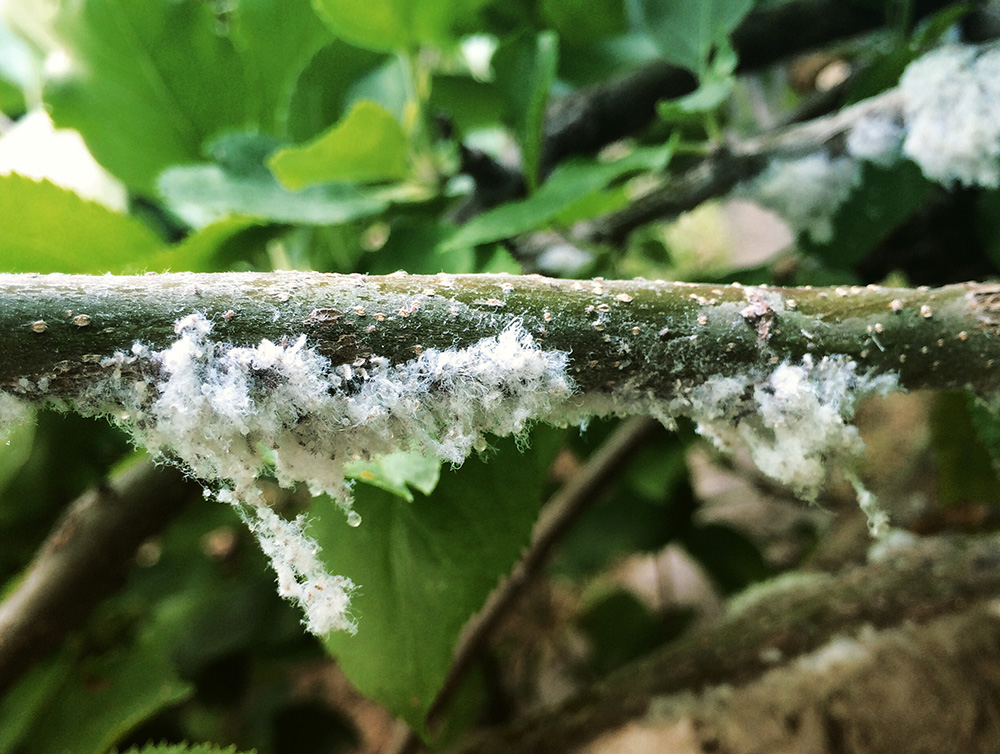
Woolly apple aphid populations will be rapidly increasing during July and August. This species of aphid occurs in the tree as well as below ground. They feed on the bark of the trunk, scaffold limbs, and succulent twigs, as well as on tree roots. Their feeding causes galls that may weaken trees. They are most common in trees that are not regularly sprayed.
If woolly apple aphids have increased to the point of covering more than 10-20% of the tree, they should be treated. Because of their waxy coating, it is important to spray trees to drip to allow the insecticide to be effective.
Treatment
If “woollies” are a problem every year, it is best to treat them early. Because of the aphid’s thick, waxy coating, it is important to spray the tree (or target individual colonies) to drip, to reach the aphid bodies.
- Backyard growers can use insecticidal soap+1% oil (organic), or mix 1% oil with Spectracide Triazicide or GardenTech Sevin, aimed directly at the colonies.
- Options for commercial growers
PEACH, NECTARINE, APRICOT, PLUM
Peach Twig Borer
View a pdf of the spray timing table. (Note that some dates are in italics because they are past dates.)
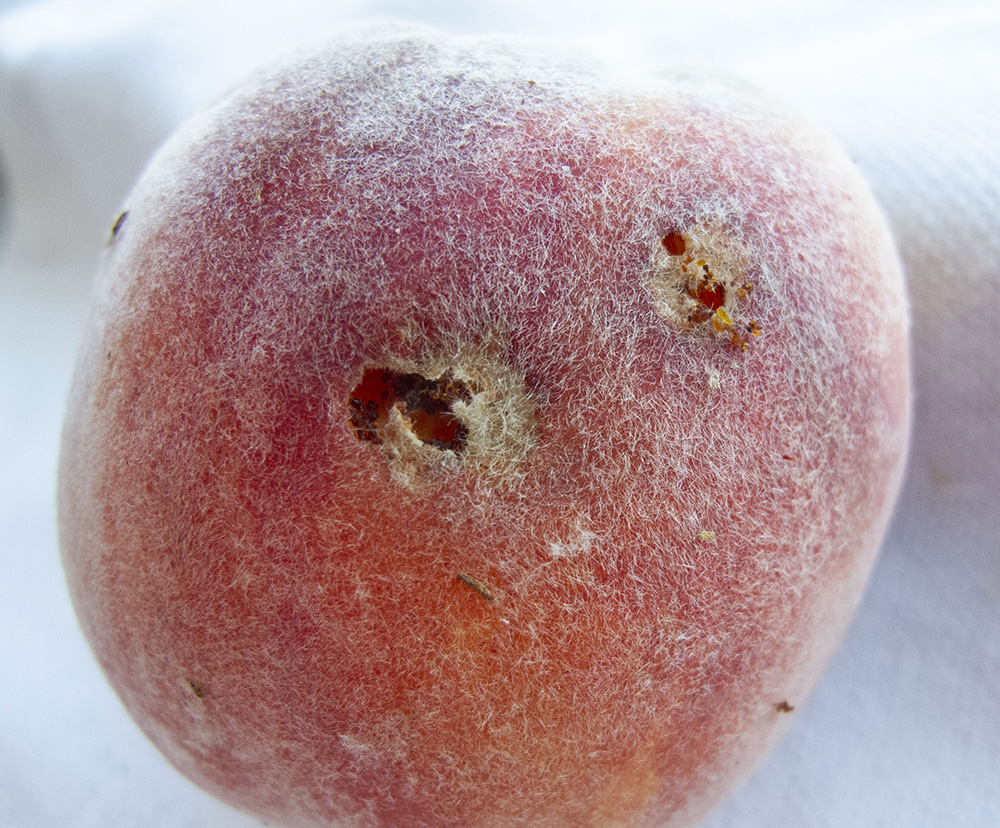
First generation egg hatch for peach twig borer is over for most areas of Utah. The eggs of the second generation will begin hatching mid- to late July in northern Utah. (Third generation in southern Utah.)
Fruit becomes more susceptible to attack by twig borer larvae when it is softer, and one application at the beginning of second generation should suffice for most areas, while a second application will be needed in high population areas.
Treatment
Residential:
The option you are using for codling moth and/or cherry fruit fly can also be used for peach twig borer.
- Conventional options include Spectracide Triazicide; GardenTech Sevin, others
- Organic options include products containing spinosad; Safer BioNeem; Safer End All Plus Neem; Ortho Fruit Spray or other products containing pyrethrin.
Commercial:
- If harvest will be occurring on early peaches, select a material that has a shorter pre-harvest interval, such as Assail, Intrepid (7-day PHI), or Entrust (1-day PHI).
- Options for can be found here for peach, and here for apricot
Walnut Husk Fly
Peak emergence of flies in early August
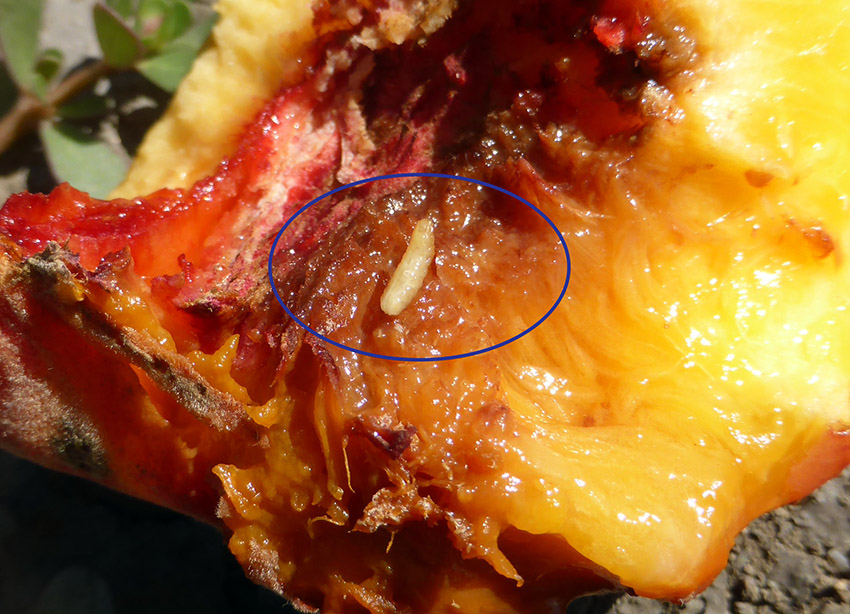
We discussed walnut husk fly in the June 24, 2023 advisory. Keep in mind that along the Wasatch Front, the peak fly emergence will occur in early to mid-August, so you may need to make another application at that time.
Treatment
Applications for peach twig borer will also target walnut husk fly on peach.
Where walnuts are grown, populations of walnut husk fly can be reduced by removing all nuts that fall to the ground. To make husk removal of infested nuts easier, store them in a damp burlap bag for 2 to 3 days.
Earwigs
Can damage fruit as it ripens
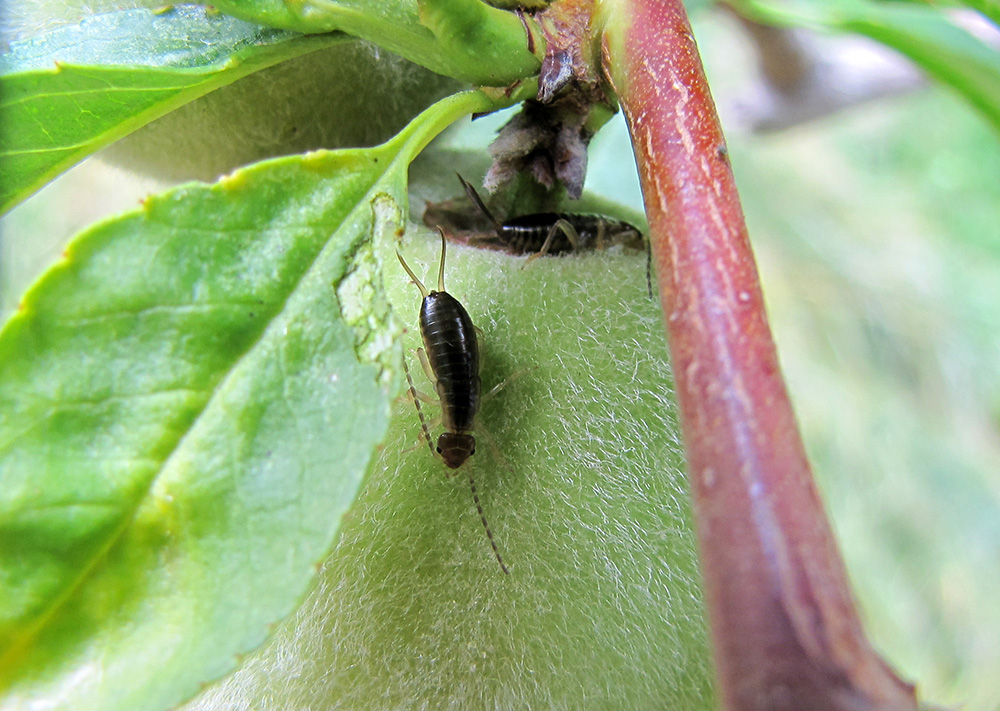
Earwigs are active in fruit trees now, but while fruits are still hard, they are instead feeding on foliage or other insects. Once fruit softens, earwigs chew small but deep pits into the fruit flesh. They can also enter fruits through existing openings or cracks. Their feeding introduces bacteria and decay fungi that can render the fruit inedible.
Our snowpack and spring rains of 2023 has contributed to a high population for this summer, so keep an eye out. They are active at night, but close examinations of fruit (especially split-pits) will determine if earwigs are present.
Treatment
To manage earwigs, use a variety of options:
- Trap regularly. Options are: cat food or tuna cans, with 1/2-inch of fish or bacon oil in the bottom; rolled-up newspaper; rolled up corrugated cardboard; bamboo sticks; or short pieces of hose. Place traps on the soil or wrapped around the tree trunk and empty traps into soapy water, or change them out, daily. Continue until you are no longer catching earwigs.
- Remove refuge sites. Keep mulch away from trees, remove weedy growth or groundcovers from the base of trees. Remove tree suckers or any limbs touching the ground. Remove loose bark on fruit trees where earwigs can hide.
- Pick fruits as soon as they start to ripen.
- Insecticides. Spinosad kills earwigs when they feed on it. It can be used either as a spray (many brands) or bait sprinkled at the base of trees (Sluggo Plus). (In this method, the bait must be used before the earwigs enter the tree. Otherwise, sprinkle bait in tree crotches.) Carbaryl (Sevin, others) can also be used, applied to the tree trunk and scaffold limbs, but again, it must be applied as soon as earwigs are starting to enter the tree. Both options have shown good control for earwigs, and have short PHI’s. Other granular baits are also available.
Cat-facing Injury
Monitor for stink bugs
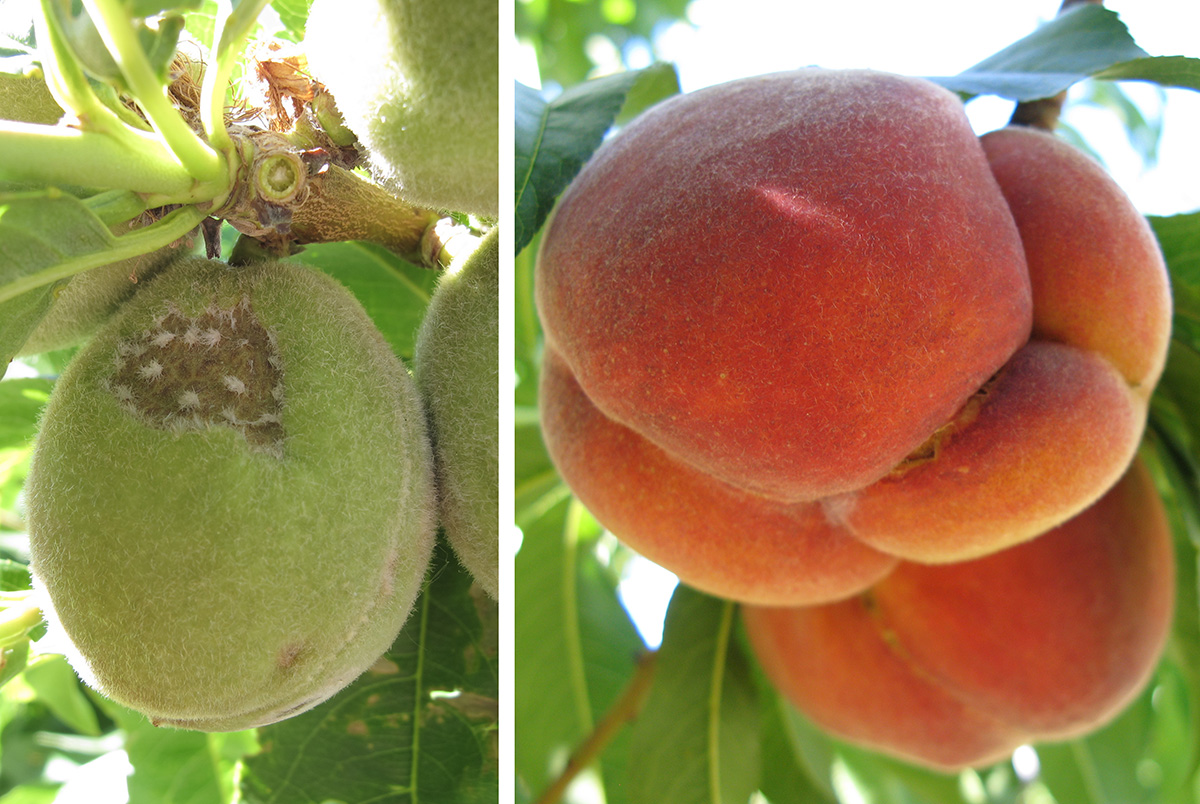
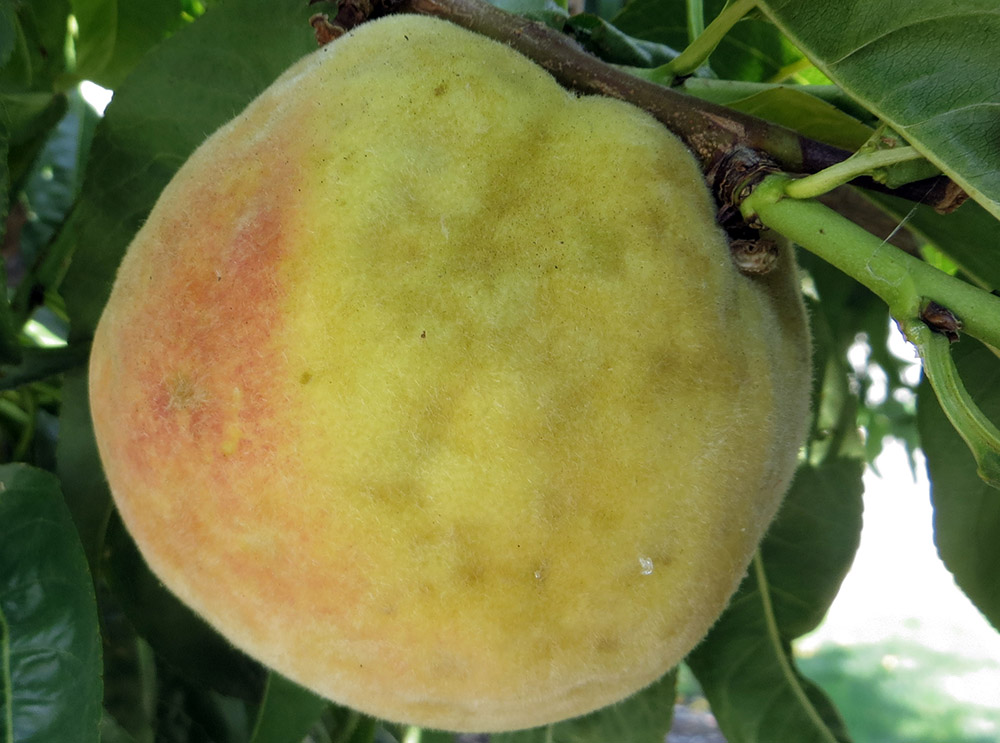
As the weather gets hotter and drier, stink bugs will increase movement from ground cover and weedy areas into fruit trees, particularly peaches. Adults may lay eggs in or near the orchard, and nymphs and adults will feed on fruit by piercing the skin and sucking out the juices dissolved by their salivary enzyme.
Their feeding leaves a variety of symptoms depending on when it occurred. Early feeding will result in deep pits in the fruit while later feeding (close to pit hardening) will leave brown scars under the skin, and cause clear oozing.
Treatment
For the most part, stink bugs do not warrant an insecticide application. The most effective materials are the broad spectrum insecticides (carbaryl and pyrethroids) that are also harsh on beneficial insects and pollinators.
Often the cost of an application (labor, materials, and loss of beneficials) outweighs the minor fruit losses from stinkbug injury.
Greater Peachtree Borer
Continue protecting lower trunks of young trees through September
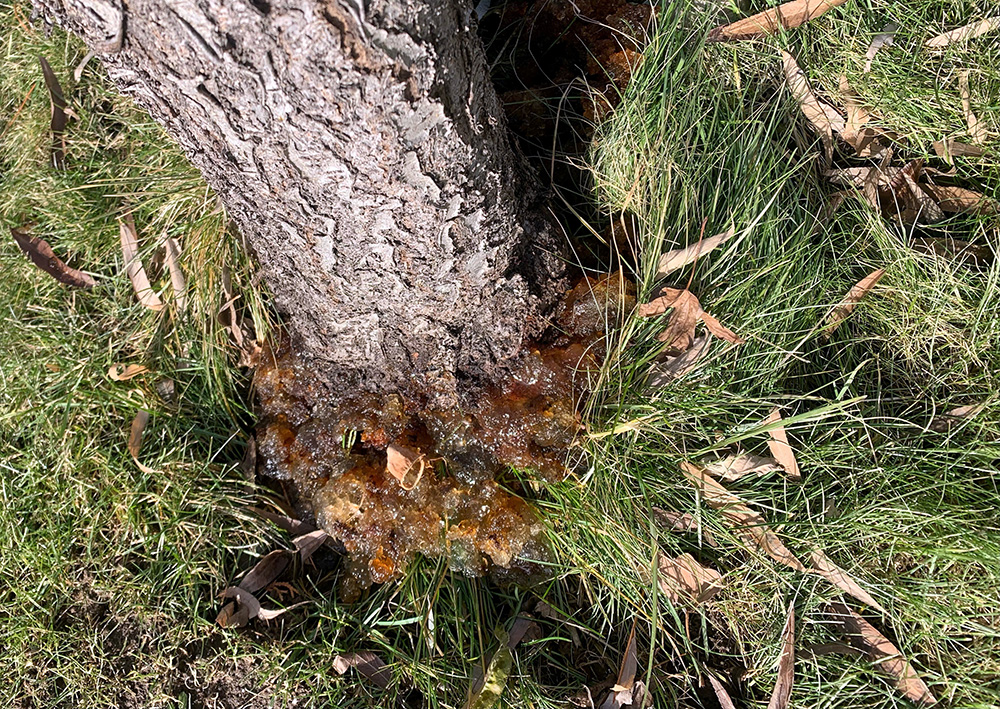
Continue to protect the lower 12-18 inches of the trunks of your susceptible trees through September. Make sure the spray covers the entire surface area, particularly close to ground level, and any exposed roots.
Other ways to prevent attack are:
- Remove all weeds, grass, and excess soil from around the base of the tree. Heat and dryness reduce the survival of eggs and larvae.
- Avoid mechanical and rodent-caused injuries to trunks.
- Keep trees healthy with optimal nutrition and irrigation
SMALL FRUITS
Grape Leafhopper
Monitor for nymphs starting in late July
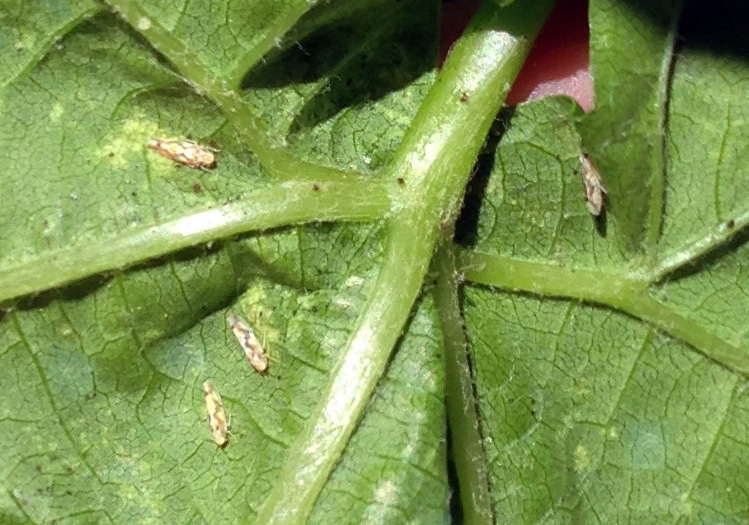
The western grape leafhopper is sometimes mistaken for a whitefly in late August, when flying adults are present in grape plants. If this pest has been a problem in the past, do not wait until August. In late July, nymphs of summer generation will visible on the foliage. Nymphs don’t have wings and are much more susceptible to treatment.
Scout for nymphs by turning leaves over and looking for rice-shaped, cream-colored insects along the leaf veins.
Grape leafhoppers spend the winter as adults on weeds or groundcover near grape plants. Eggs are laid inside foliage and hatch in late May, with egg-laying adults present in late June.
Nymphs and adults damage foliage by extracting sap and chlorophyll, leaving behind white stippled areas. With heavy feeding, the foliage may become speckled with dark excrement or become scorched. However, flying adults are especially a nuisance as you work in your grapevines.
Treatment
Plants can withstand a high population, and there are several beneficial insects that keep the population in check. A guideline for treatment is an average of 10 nymphs on 80% of the foliage.
- Residential: horticultural oil (1%, apply only when temperatures are below 85F), insecticidal soap, pyrethrin (Lilly Miller, Pyganic), carbaryl (Bayer Advanced Complete), Malathion
- Commercial: acetamiprid (Assail), pyrethrin (Azera, Pyganic, Tersus-good coverage is important), methomyl (Lannate), horticultural oil (1%)
Feeding Damage to Raspberries
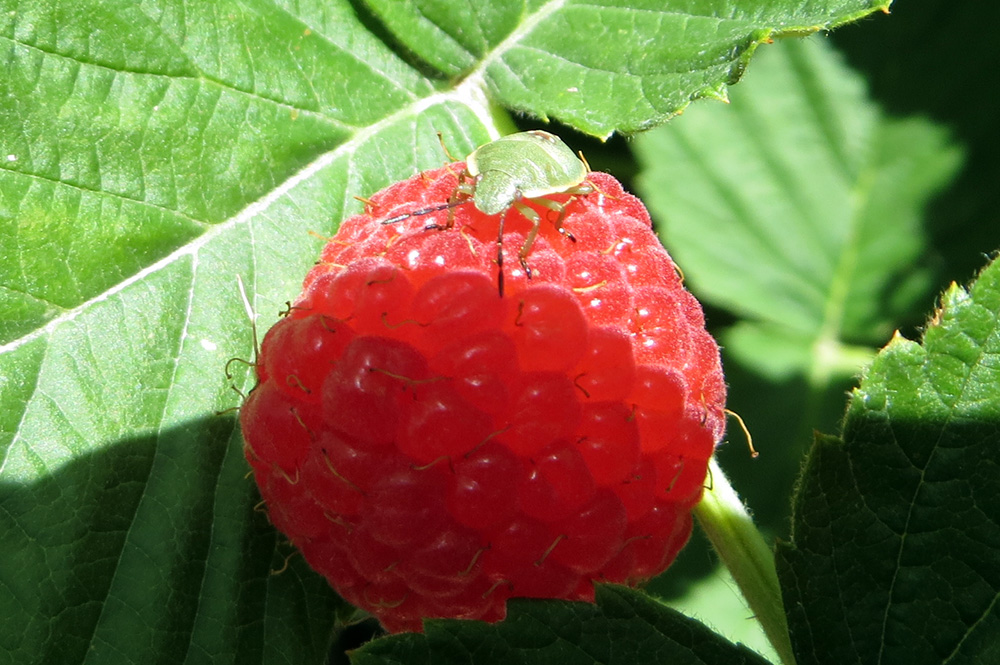
We often see blackberry and raspberry fruit with white or tan drupelets, or with shriveled drupelets on the berry. Two common reasons for this are sunscald or insects.
If the discolored drupelets are still firm, the damage is sunscald, occurring only on the exposed side. The fruits are still edible, but not as marketable.
If the drupelets are shriveled, then the cause is a chewing or sucking insect.
- Stink bug damage will occur randomly around the berry, and may occur on all sides. As the insect feeds on the berry receptacle, it injures drupelets on either side. When injury is seen, it is often too late for control, since the symptoms don’t show up until several days after the original feeding.
- Possible chewing insects include European paper wasp, earwig, or grasshopper.
To determine the insect cause, it often requires investigation, both during the day and at night, for insects on the berries.
- Shake some berries over a cloth to dislodge insects.
- Use a headlamp at night to check for earwigs.
- Check the ground for grasshoppers, and dig in the soil/mulch around the crowns of plants to see if earwigs are hiding during the day.
Treatment
With ripe fruit, the only insecticide option that would target all of the above-mentioned pests is pyrethrin. It is organic and has a 0-day PHI.
Commercial options include Azera, Botanigard, Pyganic, Tersus, and there are many residential products with this ingredient.
